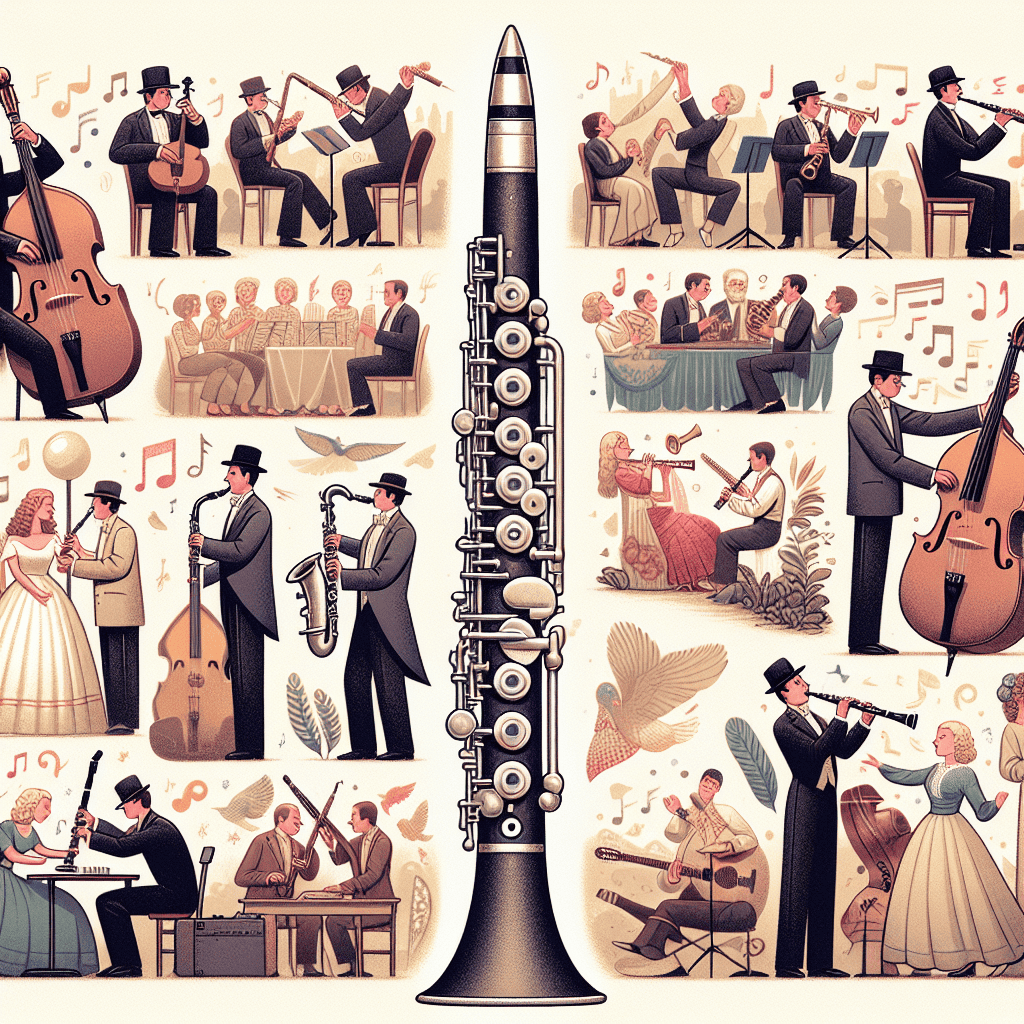The G Major Pentatonic Scale has played a fascinating role in shaping clarinet music. This five-note scale, consisting of the notes G, A, B, D, and E, is not only simple but also incredibly expressive and versatile. It's no surprise this scale has left its mark throughout musical history, influencing genres across the globe. Join us as we explore its historical significance in clarinet compositions and beyond!

Clarinet Fingering Charts are always FREE at MartinFreres.net!
Cultural Influence of the G Major Pentatonic Scale
The G Major Pentatonic Scale appears in various cultures, from traditional folk melodies to contemporary jazz. In many African and Asian music traditions, pentatonic scales are fundamental. This scale's sweetness and brightness appeal to audiences, making it a favorite among composers and musicians. When played on the clarinet, the instrument's warm timbre and dynamic range bring out the scale's qualities, breathing life into melodies and harmonies.
Historical Roots in Clarinet Music
The clarinet emerged in the early 18th century, and its music grew alongside pentatonic patterns. Composers often used the G Major Pentatonic Scale in their works, drawing inspiration from spirituality or storytelling. You can find it in pieces by masters like Mozart and Beethoven, who explored the emotional range pentatonic scales offered.
| Composer | Notable Work Using G Major Pentatonic | Year |
|---|---|---|
| Mozart | Clarinet Concerto in A Major, K. 622 | 1791 |
| Beethoven | Symphony No. 6 “Pastoral” | 1808 |
| Brahms | Clarinet Quintet in B minor, Op. 115 | 1891 |
Jazz and the G Major Pentatonic Scale
In jazz, the G Major Pentatonic Scale takes on a fresh flavor. Jazz musicians love this scale for improvisation. It allows them to explore musical ideas while maintaining a strong sense of melody. For clarinetists venturing into jazz, mastering this scale can help them push beyond traditional playing styles. The scale enables smooth transitions between chord changes, creating the seamless flow that jazz musicians strive for.
Practicing the G Major Pentatonic Scale
Consider how you can incorporate the G Major Pentatonic Scale into your practice routine. Begin slowly, focusing on fingerings and smooth transitions between notes. Try improvising over a simple chord progression using this scale; you might discover new musical ideas emerging naturally. As you become more comfortable, your playing will become more expressive.
The Scale as an Educational Tool
The G Major Pentatonic Scale is a valuable educational resource. Music teachers often use this scale when instructing students. Its simplicity makes it perfect for beginners, introducing complex musical concepts while leaving room for creativity. It also encourages students to explore different tones in their playing. Whether you're learning or teaching, this scale can foster musical growth and development.
Emotional Impact of Pentatonic Scales
As a clarinetist, you might wonder about the emotional effect of pentatonic scales. They often evoke nostalgia and are linked to feelings of longing or peace. This emotional quality makes the scale popular among both composers and performers. In solo recitals or ensemble performances, using the G Major Pentatonic Scale can create a strong emotional connection between musicians and their audience.
Conclusion: The Lasting Legacy
Exploring the G Major Pentatonic Scale goes beyond mere practice; it offers insight into the story of clarinet music throughout history. From its traditional roots to modern interpretations, this scale continues to shape how music is created and experienced. So grab your clarinet, explore the beauty of the G Major Pentatonic Scale, and uncover the rich history behind it!
As we celebrate the legacy of clarinet music and the G Major Pentatonic Scale, let's consider how it continues to influence the musical landscape. Remember, each note you play tells a story—what tale do you want to tell?
Table of Contents
- Cultural Influence of the G Major Pentatonic Scale
- Historical Roots in Clarinet Music
- Jazz and the G Major Pentatonic Scale
- Practicing the G Major Pentatonic Scale
- The Scale as an Educational Tool
- Emotional Impact of Pentatonic Scales
- Conclusion: The Lasting Legacy








